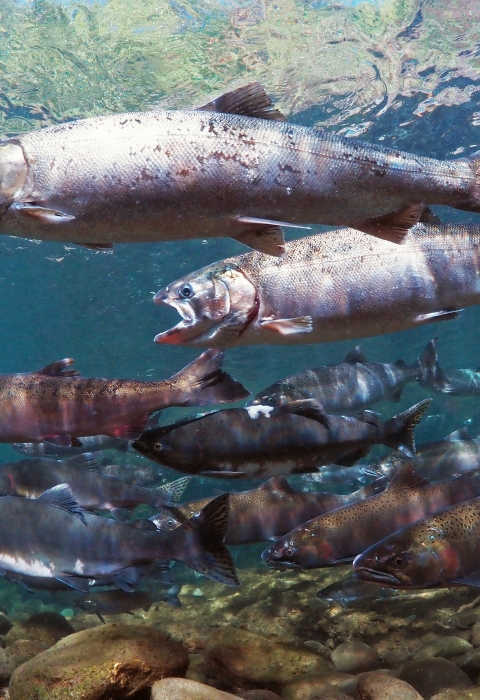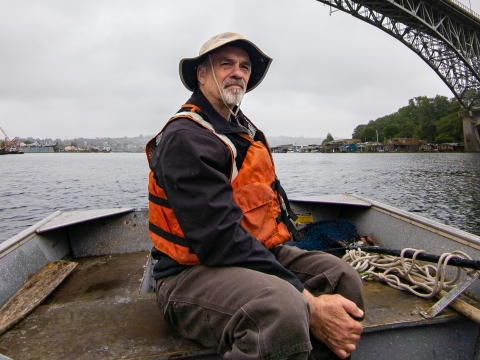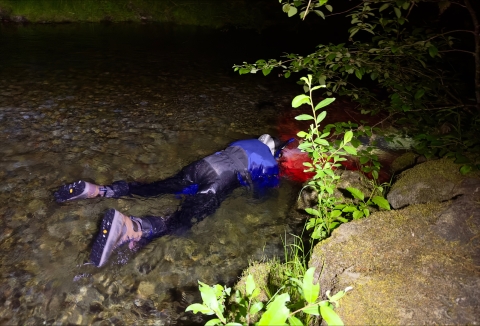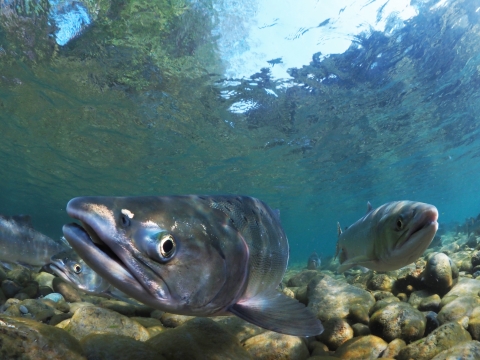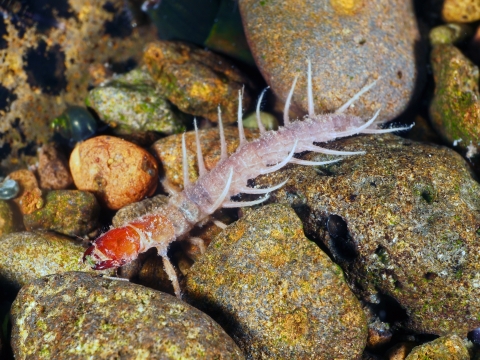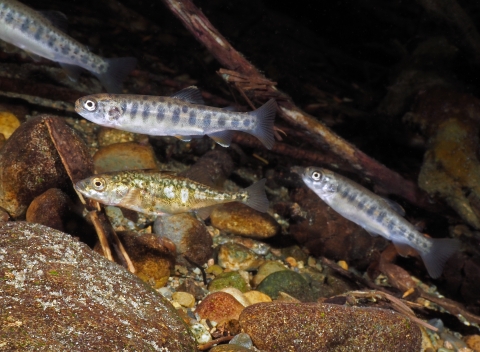In 2023, Pacific Region fish biologist Roger Tabor was awarded high honors from the Department of the Interior for his exceptional scientific contributions over a decades-long career. Tabor, known not only for these contributions to his field, is also renowned for his stunning underwater photography of aquatic organisms.
Hear from Tabor himself and learn more about the work that earned him the prestigious Meritorious Service Award of the Department of the Interior.
From Angling in his Youth to Scientific Contributions in his Future
My passion for fish, aquatic systems, and biology started at a young age while growing up in Florida and fishing for sheepshead in coastal canals with my dad. After moving to New Hampshire when I was 11, I continued angling in the many nearby coastal waterways and lakes but also started snorkeling and discovered all the other elements of the aquatic ecosystem. Because my angling skills were rather limited, snorkeling and having numerous aquariums at home offered additional ways to encounter the aquatic ecosystem.
After my undergraduate studies at Colorado State University, I headed out for work and travel, spending three months in the Aleutian Islands as a fisheries observer on South Korean trawlers and then three years in Zaire (now Democratic Republic of Congo) in Africa as a fish culture extension agent in the Peace Corps. Next, it was off to grad school at Utah State University working on rainbow trout in reservoirs.
After grad school, I was hired by the U.S. Fish and Wildlife Service at the Columbia River Research Lab (now part of the U.S. Geological Survey) and worked on a system-wide predation study on northern pikeminnow and smallmouth bass. After two years on the Columbia River, I moved to the Western Washington Fish and Wildlife Conservation Office and have been here for the past 32 years.
I have been very fortunate to work on a wide variety of aquatic species and habitats. My favorite projects were freshwater sculpin distribution studies – we sampled from the estuary to the headwaters and were able to sample a wide range of habitat types and observe longitudinal changes in species composition. Hiking into mountain lakes to sample introduced sculpin was a highlight.
I have also been very fortunate to work with so many talented and dedicated Service and other agency employees. I have had the pleasure to work with many aspiring young biologists and it’s always satisfying to see them moving on to exciting new endeavors.
Tabor Underwater
Underwater photos of impossibly clear and vivid views of salmon, mussels, and other aquatic organisms are Tabor’s signature. In a 2021 article, Tabor shared about his background and passion for underwater photography, along with tips for photographing aquatic species. When asked what he’d choose if he could photograph any organism, he had a few on the list.
Tough question, probably spawning sockeye salmon with their brilliant red colors. Also, trumpetfish, as I always enjoyed seeing their different coloration patterns and hunting strategies to help them get close to their prey, and maybe schooling grunts in Caribbean coral reefs.
I also enjoy macrophotography to help see details of the aquatic world you can’t see with the naked eye (or at least I can’t easily see).
Receiving one of the Department’s Highest Honors
For over three decades, Tabor has furthered the Service’s knowledge of native fish, Endangered Species Act-listed species, and the consequences of introducing invasive fish species throughout western Washington. Through studies and monitoring programs, he has shed light on interactions between native and invasive fish species, life history patterns of native species, and urban impacts on ESA-listed salmonids.
Tabor’s work has focused on the intersection of ESA-listed salmon and urban development. He demonstrated that urban restoration actions are important tools in salmon recovery by evaluating the efficacy and outcomes of habitat restoration in urbanized streams and lakes.
He has also researched the impact of light pollution on juvenile salmon behavior and predation vulnerability. As a result, Seattle-area municipalities now use fish-friendly lighting designs for bridges and waterways. For his work on light pollution impacts, he won the Mercer Patriarche Best Paper Award in the North American Journal of Fisheries Management.
Tabor has examined the impact of invasive species invasive species
An invasive species is any plant or animal that has spread or been introduced into a new area where they are, or could, cause harm to the environment, economy, or human, animal, or plant health. Their unwelcome presence can destroy ecosystems and cost millions of dollars.
Learn more about invasive species on native salmon, documenting yellow perch using group hunting behaviors to prey upon juvenile salmon. He was also the first to document introductions and self-sustaining populations of invasive fish species in western Washington and in mountain lakes.
He championed the conservation of Washington’s only endemic fish species, the Olympic mudminnow, whose native range is so limited that they are highly susceptible to habitat destruction.
Tabor is an effective communicator of science through his numerous peer-review publications, 21 of which he is primary author, and his underwater photography. His photographs have been used by media outlets, academic institutions, and government agencies.
For his many accomplishments and contributions in support of the Service’s programs and mission, in 2023, Tabor was granted the prestigious Meritorious Service Award of the Department of the Interior.
Tabor’s contributions continue to inform and enrich the field of fisheries in the Service and beyond.
